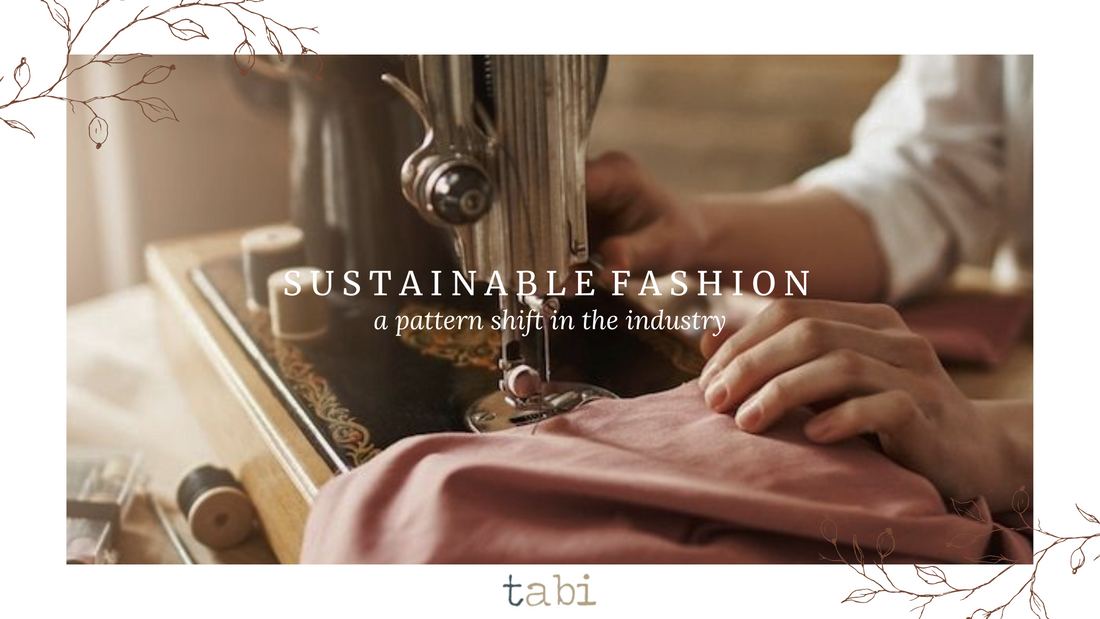
Sustainable Fashion: A Pattern Shift in the Industry
In recent years, the term "sustainable fashion" has emerged as a pivotal concept within the global discourse on environmental and social responsibility. As the fashion industry grapples with its significant impact on the environment—contributing approximately 10% of global carbon emissions and generating vast amounts of waste—the need for a transformative approach has never been more pressing. Sustainable fashion represents a shift away from traditional, linear consumption patterns toward a more circular, ethically responsible model that prioritizes ecological balance and social equity.
Defining Sustainable Fashion
At its essence, sustainable fashion encompasses a wide range of practices and philosophies aimed at mitigating the environmental and social impacts associated with clothing production and consumption. This includes the ethical sourcing of materials, the implementation of eco-friendly manufacturing processes, and the promotion of fair labour practices throughout the supply chain. Sustainable fashion seeks not only to minimize harm but also to create a positive impact on the environment and society at large.
Key Principles of Sustainable Fashion
1. Circular Economy: One of the foundational concepts of sustainable fashion is the circular economy, which emphasizes the importance of designing products for longevity, reuse, and recyclability. Unlike the traditional linear model—characterized by a take-make-dispose mentality—circular fashion seeks to close the loop, reducing waste and resource consumption through practices such as upcycling, recycling, and responsible disposal.
2. Ethical Labor Practices: Sustainable fashion advocates for fair wages, safe working conditions, and respect for labour rights. The exploitation of workers in developing countries, often a byproduct of fast fashion, highlights the need for brands to prioritize ethical sourcing and transparency in their supply chains.
3. Eco-friendly Materials: The choice of materials plays a crucial role in sustainable fashion. Natural, organic, and recycled materials not only reduce environmental impact but also enhance product longevity. Fabrics such as organic cotton, Tencel, and hemp are gaining traction as sustainable alternatives to conventional textiles, which often rely on harmful pesticides and extensive water usage.
4. Consumer Education: Empowering consumers with knowledge about the impacts of their purchasing decisions is fundamental to fostering a culture of sustainability. By promoting mindful consumption, brands can encourage consumers to make informed choices, emphasizing quality over quantity.
The Environmental and Social Impact of Fast Fashion
The fast fashion model has revolutionized the industry, allowing consumers to access affordable and trendy apparel at an unprecedented pace. However, this convenience comes at a significant cost. The environmental ramifications are stark; the fashion industry is responsible for approximately 92 million tons of waste each year, with much of this waste ending up in landfills. Moreover, the production of garments is resource-intensive, requiring vast amounts of water and energy, contributing to pollution and habitat degradation.
Socially, the fast fashion industry often exploits labor in developing countries, where workers are subjected to poor working conditions and minimal wages. The demand for rapid production cycles places immense pressure on factories, leading to unethical practices that undermine human rights. Sustainable fashion seeks to address these issues by advocating for transparency, accountability, and respect for labour rights.
Innovations in Sustainable Fashion
Innovation is a cornerstone of the sustainable fashion movement. Advances in technology and materials science are paving the way for more sustainable practices across the industry. For instance, the emergence of bio-fabrication—creating textiles from organic materials such as fungi or algae—holds promise for reducing the environmental footprint of fabric production. Additionally, the development of waterless dyeing techniques and energy-efficient manufacturing processes exemplifies how innovation can drive sustainability.
Digital technology is also transforming the fashion landscape. Brands are increasingly utilizing data analytics and artificial intelligence to optimize production processes, reduce waste, and enhance supply chain transparency. Blockchain technology, for example, provides a tamper-proof record of a garment's journey from raw material to finished product, fostering trust among consumers and encouraging brands to adopt more responsible practices.
The Role of Consumer Behavior
As awareness of environmental and social issues grows, consumers are becoming more discerning in their purchasing decisions. Research indicates that a significant portion of consumers now consider sustainability when choosing fashion brands. This shift in consumer behaviour presents both challenges and opportunities for companies.
Brands that prioritize sustainability and transparently communicate their practices can cultivate deeper connections with their audiences. Authentic storytelling—sharing the journey of materials, the ethical treatment of workers, and the brand’s commitment to sustainability—resonates with socially conscious consumers. This narrative not only fosters brand loyalty but also encourages consumers to advocate for responsible practices within their communities.
The Future of Retail
The retail landscape is undergoing a significant transformation as sustainability becomes a guiding principle for many brands. The rise of direct-to-consumer models allows companies to engage directly with their customers, reducing waste associated with traditional retail channels. Moreover, the popularity of second-hand clothing and rental services signifies a shift towards a more circular consumption model, extending the lifecycle of garments and reducing waste.
Collaborative consumption platforms—where consumers can share, swap, or rent clothing—are also gaining traction. These platforms promote community engagement and encourage a more sustainable approach to fashion, challenging the notion of ownership and emphasizing the value of access over possession.
Regulatory Frameworks and Industry Standards
Governmental and organizational regulation is crucial in steering the fashion industry toward sustainable practices. Policy initiatives that promote transparency, accountability, and responsible production can create a level playing field for sustainable brands. The European Union, for instance, has introduced legislative proposals aimed at reducing waste and encouraging a circular economy, signalling a commitment to transforming the fashion sector.
Industry standards, such as the Global Organic Textile Standard (GOTS) and the Ethical Trading Initiative (ETI), provide frameworks for brands to adhere to sustainable practices. These standards not only enhance consumer confidence but also incentivize brands to adopt ethical and eco-friendly practices.
Conclusion
Sustainable fashion represents a vital movement towards a more responsible and equitable industry. As the fashion sector confronts the consequences of climate change and social injustice, the need for transformation is urgent. By embracing innovative practices, fostering transparency, and prioritizing ethical standards, the industry can redefine its trajectory.
The journey towards sustainable fashion requires collaborative efforts among brands, consumers, and regulators. It is a collective endeavor that promises not only to preserve our planet but also to enhance the lives of those who inhabit it. The future of fashion is not only about style but about sustainability—a commitment to ensuring that fashion serves as a force for good in the world.
FAQs
1: What is sustainable fashion?
Sustainable fashion refers to practices and philosophies aimed at minimizing the environmental and social impacts of clothing production and consumption. It includes ethical sourcing of materials, eco-friendly manufacturing processes, fair labour practices, and promoting a circular economy that emphasizes longevity and recyclability.
2: Why is sustainable fashion important?
Sustainable fashion is crucial because the fashion industry significantly contributes to environmental issues, such as carbon emissions and waste generation. Additionally, it addresses social issues, including labour exploitation and unsafe working conditions. By adopting sustainable practices, the industry can reduce its negative impact on the planet and promote social equity.
3: What are some key principles of sustainable fashion?
Key principles include:
-
1. Circular Economy: Designing for longevity, reuse, and recyclability.
-
2. Ethical Labor Practices: Ensuring fair wages and safe working conditions.
-
3. Eco-friendly Materials: Using natural, organic, or recycled fabrics.
-
4. Consumer Education: Empowering consumers to make informed, sustainable choices.
4. How can consumers support sustainable fashion?
Consumers can support sustainable fashion by:
- Choosing brands that prioritize ethical practices and transparency.
- Opting for quality over quantity, buying fewer but more durable items.
- Engaging in second-hand shopping or renting clothing.
- Educating themselves about the impacts of their purchasing decisions and advocating for sustainable practices.
